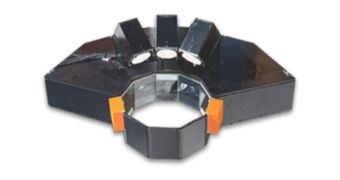In order to capture decent photos of very small objects, cameras need sensors with very high resolutions. They also need to be very close to the objects in question, and even then they can only snap a picture of one side.
Not so for the Multi Angle Snowflake Camera, or MASC for short. Developed by researchers from the University of Utah, it has been and is being used to shoot 3D images of snowflakes.
Calling the MASC a camera might even be incorrect, since it is more of an imaging system made of three cameras.
Arranged in a neat part-circle, they are triggered by a number of highly sensitive infrared motion sensors.
Whenever a snowflake falls through their area of coverage (the sensors are arrayed in a decagon, of sorts), the cameras shoot photos at a speed of one picture per 1/25,000 of a second.
And because there are three cameras, the shots are very detailed and as close to 3D as they can get. The snowflakes making up the chunks of falling snow can be as small as 100 micrometers.
Furthermore, the camera doesn't really need minding. All it takes is to mount it someplace where snow can freely get and it will do the rest.
The creators of the MASC have set up a spin-off company called Fallgatter Technologies, through which they sell the system.
So far, though, only the US Army has ordered it, and the distinct lack of a price on the official website suggests that the sum might not be safe to know for the faint of heart.
Scientists and research institutes with large funding budgets are, at this point, the only ones likely to afford the snowflake-shooter, provided they have a reason to so thoroughly examine those small ice crystals. Learn more about the Multi Angle Snowflake Camera here.

 14 DAY TRIAL //
14 DAY TRIAL //